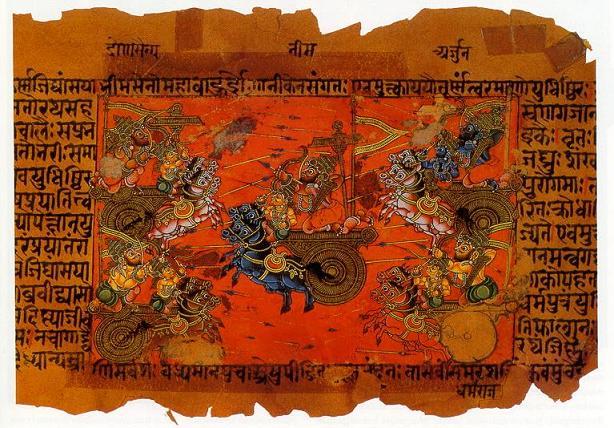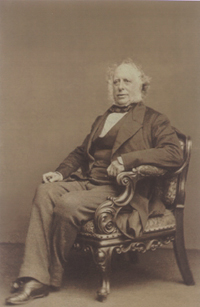DWAPARA YUGA In Dwapara, half of the merit of Mercy was lost. Rare was the enlightened person, who knew it; the Dharma-Bull had only two feet, only the enlightened person could realise the Truth. The kings performed the religious acts with motive. Acts of charity were practised with hope for reward; No ritual could bring salvation without the Name of the Lord….. (Maru M. l, pp. 1023-24) In Dwapara Yuga, the duality grew strong. Those who indulged in duality strayed into illusion; In Dwapara, the Dharma-Bull had only two feet, He, who became enlightened held fast to the Name of the Lord. (Ramkali M. 3, p. 880) In Dwapara, the chariot is of austerity and charity is the charioteer.
(Var Asa M. l, p. 470) During the Dwapara Yuga, Dharma became two-legged. There prevailed falsehood, malice, dissensions and discontent. The virtues diminished by half. There was violence and strife, though the scriptures were read and acts of Dharma were performed. See : Yugas (Ages)
References :
1. Kohli, Surindar Singh (ed), Dictionary of Mythological References in Guru Granth Sahib, 1993
Dwapara Yuga, or the “Third Age,” is one of the four epochs in Hindu mythology, collectively known as the Yugas. According to the Vedic scriptures, the cyclic progression of these ages—Satya Yuga, Treta Yuga, Dwapara Yuga, and Kali Yuga—symbolizes the moral and spiritual decline of humanity over time. Dwapara Yuga, which precedes the current Kali Yuga, is characterized by a significant shift in the moral fabric, technological advancements, and spiritual practices.
Essence of Dwapara Yuga in Hindu Mythology
In Hindu cosmology, Dwapara Yuga lasts for 864,000 years and is the age of transition between the idealistic Treta Yuga and the chaotic Kali Yuga. The epic Mahabharata unfolds during Dwapara Yuga, marking it as a time of immense historical and spiritual significance. Key events such as the Kurukshetra War, the rise and fall of dynasties, and the divine teachings of Lord Krishna in the Bhagavad Gita occur during this epoch.
Unlike Treta Yuga, where dharma (righteousness) stands on three pillars, Dwapara Yuga sees dharma supported only by two, indicating a decline in truth, compassion, and integrity. However, the age is also associated with profound spiritual revelations and the emergence of practices to guide humanity in its journey toward the Divine.






